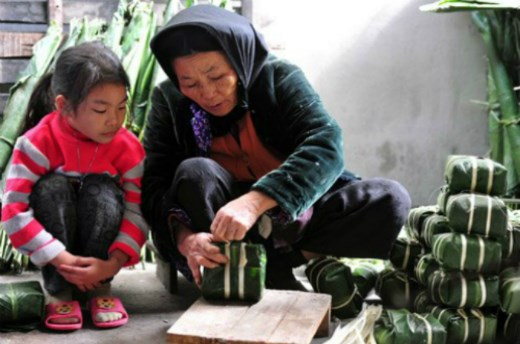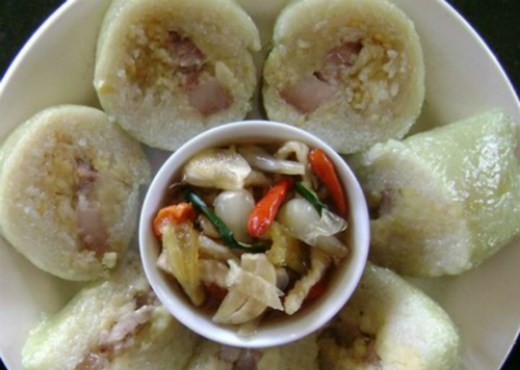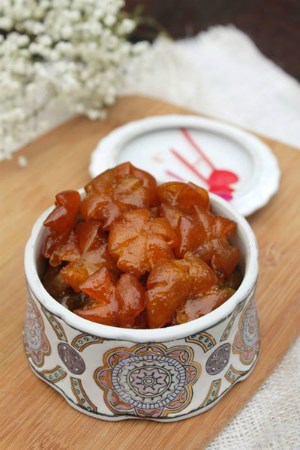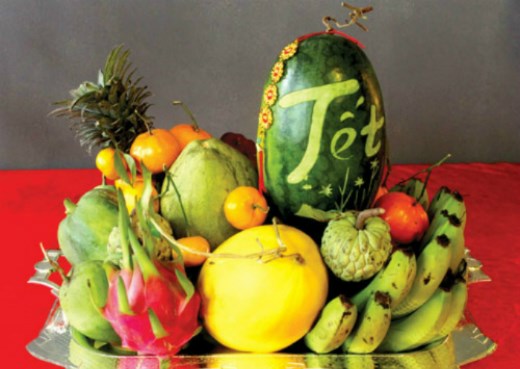Vietnam’s
Lunar New Year festival is just several days away and some of you may be
wondering what it’s all about.
Eating.
Seriously.
Vietnamese
don't "celebrate" Tet. We “eat Tet.” Some "play Tet,” which most
interpret to mean we are eating and drinking Tet.
Here's
a list of some of the stuff you can expect to eat.
Sticky rice cakes
Everywhere
you go, expect to an offer of banh chung.
This
meat and bean-filled sticky rice gets steamed and wrapped in a big dong
(Phrynium placentarium) leaf. To be honest, it's dense enough to stop a bullet.
As the days of Tet wane, people take to deep-frying pieces of it, which
(naturally) makes it better.
Most
shape these cakes into a thick square as a nod to the traditional belief that
the Earth was square and the sky was round.
Legend
has it that the recipe was invented four thousand years ago while a king was
trying to figure out who was next in line.
He
ordered his sons to come up with a meaningful recipe and the simple mix of
sticky rice, mung beans and pork outdid all other offerings—presumably a lot of
exotic animals stuffed into other animals.
The
king's choice made banh chung a central part of the Lunar New Year.

A woman in Hanoi shows her grandchildren how to wrap a banh chung. Photo by VnExpress/Hoang Ha
Many
people in southern Vietnam prefer banh tet, which is basically the same dish
wrapped in banana leaves and shaped like a sausage.
There's
also banh day, an unwrapped round sticky rice cake representing the sky.
Nowadays,
the cakes are sold year-round, typically by vendors pedalling bicycles equipped
with mechanized loudspeakers that chant the various names. Factories, likewise
turn out tons of them, every season.
Despite
their ubiquity, many families in rural Vietnam continue the tradition of
spending hours cooking and wrapping the cakes as a way to get into the holiday
spirit.
Pickles
To
deal with all this dense food, many households prepare awesome quick pickles
that rarely occur in the cuisine outside the holiday.
These
pickles tend to be saltier in the North and sweeter in the South, but they
always add a nice sour crunch to the many rich dishes served during Tet.

A bowl of pickles pairs perfectly with dense sticky rice cakes. Photo by VnExpress
Few
hard and fast rules apply to these holiday pickles, which may include
everything from green papaya to cabbage and everything in between.
Most
cooks tend to ferment the veggies only for just a few days and add ginger or
bird's eye chilies for an extra kick.
Those
who prefer drinking to eating will find these pickles and dried shrimp a great
beer snack.
Meat
As
food markets are often closed during the holidays, many Vietnamese keep meat
around for the many unexpected guests they expect.
Cooks
throughout the country will most certainly braise cubes of pork belly and
shoulder in fish sauce until impossibly tender. Some will add duck eggs, fresh
coconut juice and sugar, depending where they fall on Vietnam's "S".
In
any case, the meat will get reheated over and over again as friends and family
work their way through it.
Others
will offer logs of charcuterie known as cha, which may appear as a plain,
spongy lunch meat (cha) which can be spiced up with peppercorns, cinnamon or
cloves of garlic.
Keep
an eye out for slices of head cheese, essentially a gelatin containing shredded
pork skin, ears and snouts.
Northern
Vietnamese prepare a special aspic known as “thit dong” (frozen meat), which is
essentially a congealed savory soup.

Caramelized kumquat. Photo by VnExpress
Candies and nuts
Candied
fruit (mut) adds vibrant color to Vietnamese houses during the holiday.
Residents
once prepared these treats at home, filling their villages with the pleasant
smell of fruit.
These
days, people turn to supermarket shelves lined with hundreds of kinds of
snacks.
Most
houses keep a spinning tray of candied coconut, ginger, sweet potato, kumquat,
tamarind, and pineapple not far from the home's teapot.
Not
far should be a healthy stock of roasted seeds (watermelon, sunflower and
pitaschio) which families may spend hours splitting and eating.
Fruit
While
fresh fruit plays an important role on the Vietnamese table throughout the
year, it takes on a whole added significane during Tet.
During
the auspicious holiday, fruit must look immaculate on the ancestral altar.
Most
families purchase one or two pairs of watermelons on their altars or guest
rooms.
The
round shape of the fruit, and its red and juicy flesh symbolize luck and
satisfaction, which everyone hopes for in the new year.

A display of fruits is a common house decoration in Vietnam during Tet.
A
Vietnamese legend has it that an exiled royal family survived for months on an
island replete with watermelons. Today, many believe that beginning the year
with watermelons will carry them through the year smoothly.
Likewise,
certain fruits are also preferred during the holiday—more for their symbolic
significance than their taste.
Many
keep a tray of custard apples, coconut, papaya and mango because their names,
when put together, sound very similar to a prayer for a fruitful year: “Cau vua
du xai” (Bring us just enough to spend).
But
according to many, a subtle prayer does not suffice.
That’s
why there has been an increasingly popular trend to make the Tet wish more
recognizable, by carving words like luck, wealth, and prosperity onto the skin
of the fruit or growing them in moulds that result in the shape of a Mercedes
Benz or golden ingots.

A farmer holds two watermelons that he has sucucessfully grown into the shape of sycee—a Cantonees golden ingot. Photo by VnExpress/Gia Bao
By VnExpress